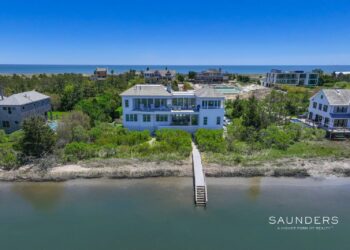
Elizabeth Castellano, New York native, draws heavy influence from the beach town way of living in her debut novel Save What’s Left, which will hit marketplaces on June 27th. She finds herself inspired by location and expresses that she could not have written this novel without having experienced the setting firsthand, making it a driving force for the storyline.
Save What’s Left is a work of humorous fiction, bringing an unexpected twist to the beach read genre. The novel is about a woman who relocates to a small beach town in hopes of finding solace, which is what one would come to expect of a small coastal town with a scenic setting. However, she soon finds herself in a neighborhood feud rather than taking in the peace she had initially hoped for.
Elizabeth spoke more about her idea and inspiration behind her debut novel, how her beach town upbringing influenced her, and what success means to her as an author.
Congratulations on your debut novel Save What’s Left. Can you talk about the story behind it and where your inspiration came from to write this book?
EC: Save What’s Left was inspired by many of my experiences growing up and living in a beach town. I liked the idea of turning the beach read on its head and providing a behind the scenes look from an insider’s perspective. There is a sense that everything is perfect in a beach town—that you will arrive and it will be paradise. But, in reality, beach towns are just small towns with a better view. There are meetings and committees and squabbles over picnic tables and parking permits and bad neighbors. And, in the end, everyone has to learn how to live with each other.
What would you say is the main message or theme in Save What’s Left?
EC: Save What’s Left is really about what happens when our fantasies collide with reality and what occurs in the aftermath. It’s about finding happiness and purpose in unlikely places. The title Save What’s Left is a reference to the main character’s marriage and her sense of self. But, of course, it is also a nod to the environmental movement and the question of overbuilding in coastal communities, which is a main theme of the book.

How would you describe your writing style?
EC: I have a very conversational and candid writing style. I want readers to feel like they are hearing from a friend and that my character is speaking directly to them. In Save What’s Left, the protagonist often engages with the reader directly, asking questions, checking in, and reassuring everyone that she too sees the irony and absurdity of her actions. There is a constant dialogue between the character and the reader.
What is your process? Do you have a set writing schedule each day?
EC: I like to spend a good portion of my day complaining about writing. I think that really helps the process tremendously. I’ll think and complain and jot down little notes during the day and usually by the end of the night, I have sorted out what I want to say and I’ll get to work. I edit as I go. So, after each new sentence or two, I’ll go back to the top and either re-read or re-type the previous section. I also read what I’ve written out loud, which is embarrassing, but helpful.
I have a very haphazard index card method for outlining. If I don’t have the index cards, I’m lost. I’ve heard a lot of authors say that their characters speak to them and tell them which direction the story should go. I’m very jealous of this. My characters never speak to me. They don’t help me at all. It’s just me and the index cards.
How do you define success as a writer?
EC: I think success as a writer is having some kind of impact on your readers, whether that be a new perspective, an escape, or just a laugh.
Are there any authors or other creatives who have influenced you?
EC: Many. Nora Ephron, JD Salinger, Anna Quindlen, Calvin Trillin, David Sedaris are just a few. I studied theater in college and am very influenced by plays and playwrights, particularly when it comes to natural sounding dialogue. I’m almost always listening to music and, often, can get new ideas or perspectives from songs. I’m so impressed with people who can write music. I bought a book called “How To Write One Song.” So far, nothing.
Does your location influence your writing in a significant way?
EC: Definitely. The location of Save What’s Left is at the heart of the story. The beach town setting isn’t just a beautiful backdrop. It is driving much of the action and plot. A lot of the novel focuses on the small nuances and details of daily life in a beach town. I couldn’t have written it without having been immersed in a similar environment.
Do you have any advice for aspiring authors?
EC: It is possible. I think that’s the main thing. Not giving up is a big part of becoming an author. Also, I think it’s always best to write about something you care about or something that you feel needs to be said.
What’s your favorite pastime on the East End of Long Island?
EC: I guess my favorite pastime is arguing about parking restrictions and discussing pumpkin traffic. I also really love the blueberry muffins at Briermere Farms.
Visit your local bookstore or online retailer for your copy of Save What’s Left to enjoy a hilarious beach read this summer in the Hamptons!












